What Color Surface Pro 3 Do I Have
Only like Romanas, I love my Microsoft Surface Pro iii (in fact, I was the one who convinced Romanas to get one afterward my feel with the Surface Pro 2 and eventually 3rd generation). Although Romanas has already put a lot of nifty information in his excellent in-depth review, at that place is one big reason why I personally strongly prefer the Surface Pro over a laptop – I can work with it on my lap and it does not make me uncomfortable, as it does not generate any heat. But despite all the good things about the Surface Pro 3, there is ane issue that can be particularly problematic for photographers: to extend battery life, Microsoft actually modified Intel's graphics card drivers and reduced the number of colors that can be displayed by the device. For most people this might not be a problem, merely for us photo geeks, this "hack" is actually quite a big issue, every bit it introduces banding / posterization to images. It besides makes information technology hard to distinguish between some shades of colors, which is rather lamentable, since the high resolution screen is the number 1 selling point of this device (turns out Apple employs a similar trick on its MacBook Air machines). Another inquiry nosotros have received from our readers is on calibration – is it possible to calibrate the Surface Pro 3 screen? In this article, I will provide detailed information on how to set up the banding issue and provide detailed instructions on how to properly calibrate the Surface Pro 3 screen.
How to Fix the Banding / Posterization Consequence on Surface Pro three
The process of addressing the banding / posterization issue involves replacing the Microsoft-provided graphics card commuter with Intel's driver. Although per Microsoft, this removes the "optimization" of the graphics carte driver from the arrangement and they cannot guarantee the same battery life, I have been using Intel's driver for a while at present and I can honestly come across no difference in battery life consumption. So if you are wondering if it is worth doing this or non, in my opinion, it is definitely worth replacing the driver no matter what Microsoft says. I actually hope that Microsoft addresses the banding issue soon with a proper driver replacement, and then that we do non accept to manually update anything going forward. It is certainly rather abrasive that ane needs to become through this process only to go the best out of their equipment…
As of today (12/09/2014), the latest Intel graphics driver for the Surface Pro three (which has 4th generation Intel processor with Intel Hd Graphics 4200, 4400 or 5000 depending on model) is version xv.36.vii.64.3960 that was released on 10/03/2014. The driver tin can be downloaded from Intel'due south website. Since we have to manually force-install the Intel driver, you should download the Aught file instead of the EXE file. Once you lot get the ZIP file downloaded, get alee and unzip it into a temporary folder, similar C:\Temp\Intel. From here, follow the below instructions:
- Open Device Manager, expand "Display adapters", right click on "Intel(R) HD Graphics Family unit" and click "Update Driver Software"
- Select "Browse my computer for driver software"
- Instead of searching for the driver, click on "Permit me pick from a list of device drivers on my computer"
- Click "Take Disk…"
- Click the "Browse" button and navigate to the binder where y'all extracted the ZIP file. Underneath the folder, discover the "Graphics" binder and double click on it. You will run into a single file that says "kit64ics" here. Double click that file, which volition open that folder location
- After you click "OK" you will have a single selection that shows "Intel(R) HD Graphics Family unit"
- Click "Next" to begin driver installation. During the installation, your screen volition turn on and off temporarily several times, which is normal
Once the commuter is installed, you should at present be able to verify that the correct version is installed. In Device Director, right click the same "Intel(R) Hd Graphics Family unit" icon and click Properties. Under the driver tab, you should see that the commuter version is ten.18.10.3960 from 09/24/2014, every bit shown below:
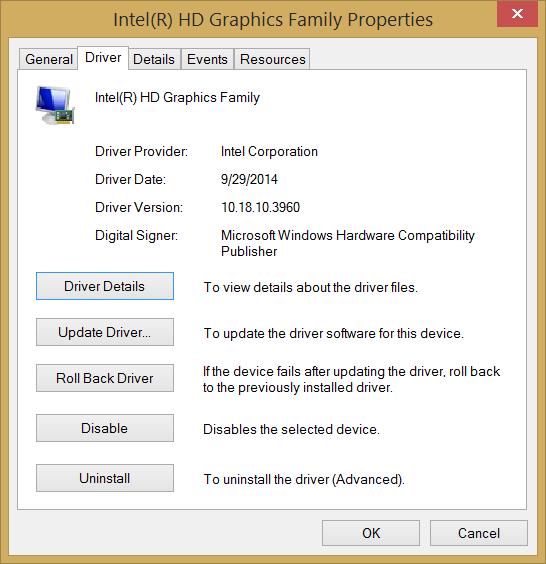
At present if you wait at images with gradients, y'all should non encounter any banding / posterization problems, and so the effect is taken care of. Information technology is a proficient idea to keep the latest drivers in your computer, just in example Microsoft overwrites them in the adjacent update. If that happens and the banding issue is yet there, but repeat the above steps to restore Intel'south drivers. Equally I have already said in a higher place, I hope this banding problem gets addressed presently!
Surface Pro 3 Display Calibration
One time you accost the banding outcome, it is a good time to calibrate the Surface Pro 3 screen. I am happy to say that the Surface Pro 3 screen can be calibrated quite effectively – my Surface Pro 3 now looks pretty close to my calibrated Dell monitors, which is great news. Since for my calibration needs I use the excellent Ten-Rite i1Display Pro, I used the aforementioned device for calibrating the Surface Pro 3 screen.
Here are the step-by-pace instructions on how I calibrated my screen using the X-Rite i1Profiler software (make sure to select "Advanced" from the calibration screen first):
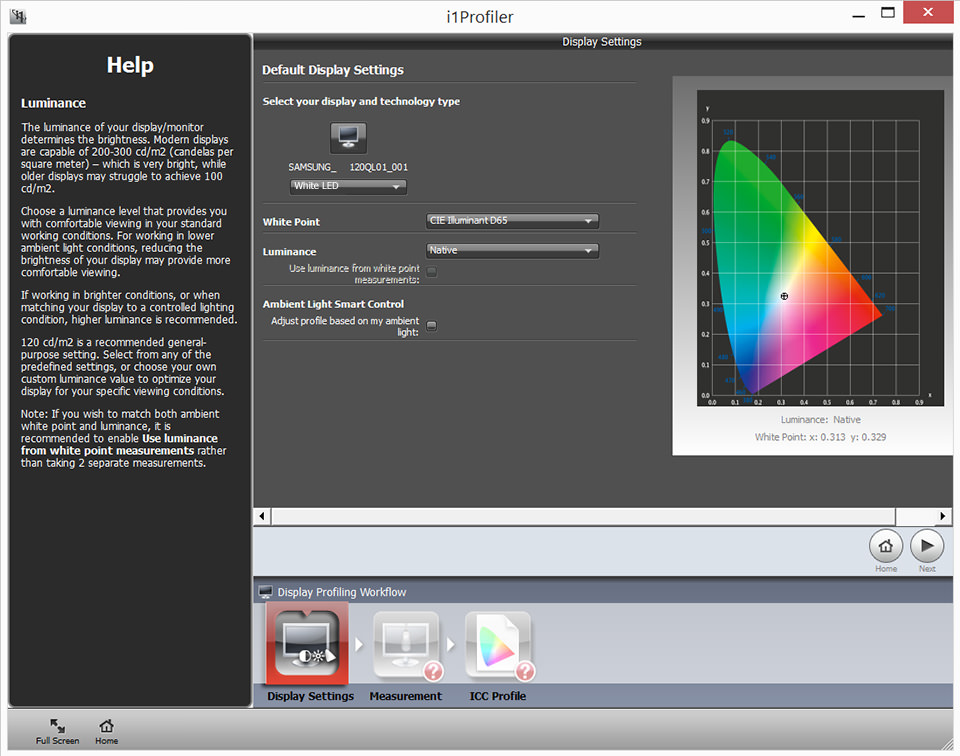
The first screen is the most of import one, since this is where you set up the brandish type. I take tried a few different configurations and found "White LED" to work the all-time for the Surface Pro iii screen. I went with the Native luminance level, but yous can target specific luminance level like 120 cd/m2 if you adopt.
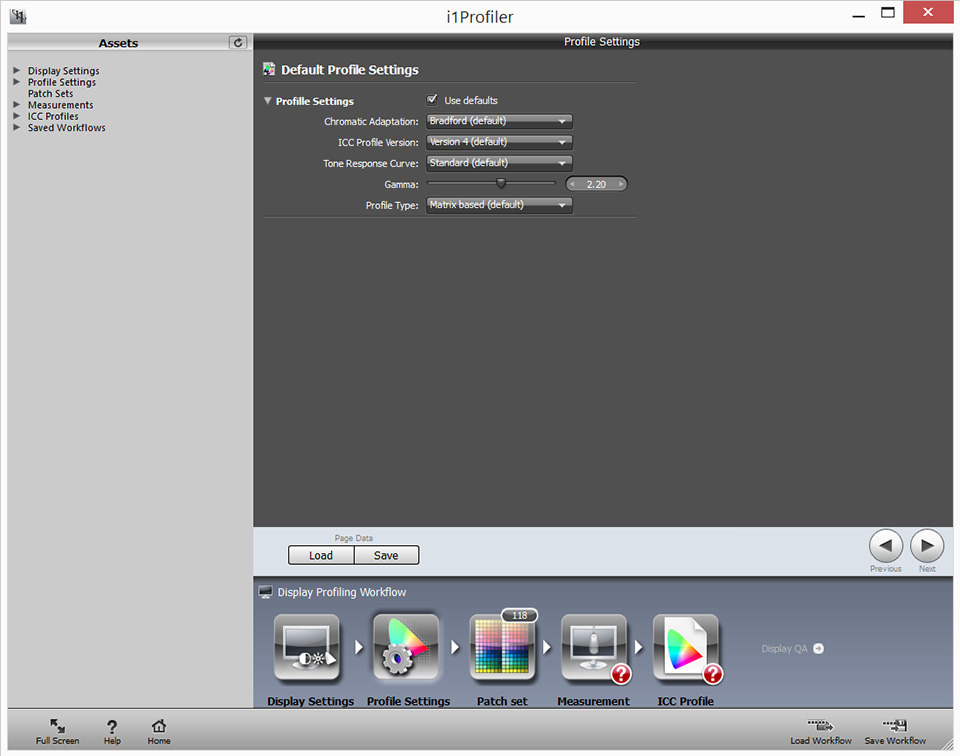
I left everything at default for the next screen.
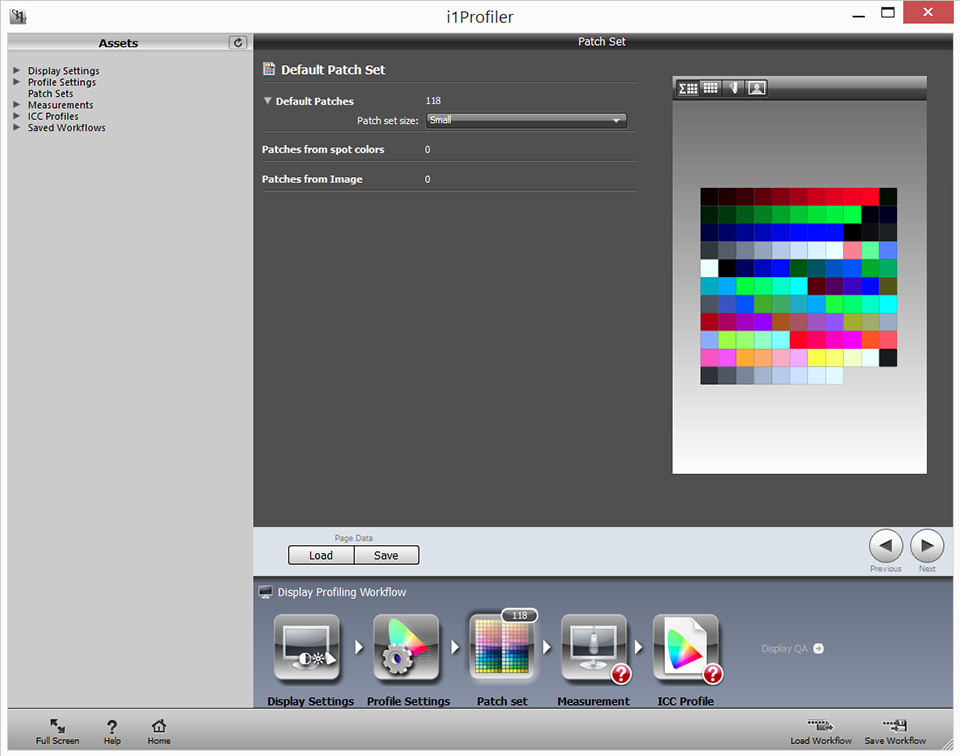
Left the patch set size at Modest.
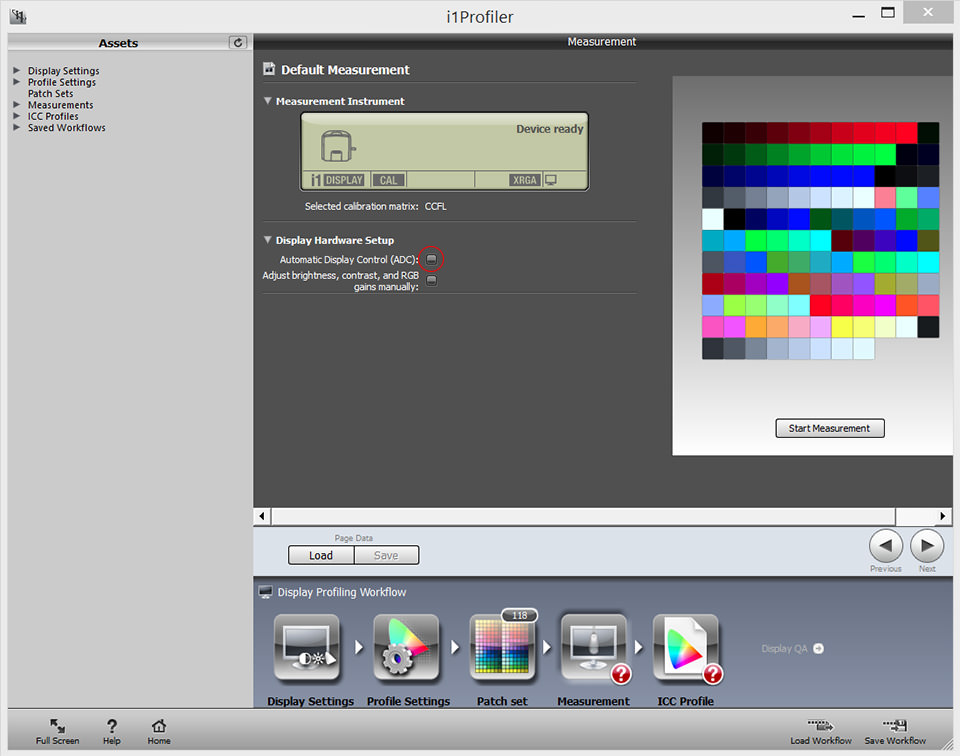
This ane was a chip painful at first. Since ADC was turned on by default, the software would crash immediately upon probing for ADC at the beginning of scale. I thought information technology was an outcome with the latest version of i1Profiler, so I downloaded earlier versions and tried them – every single one crashed. After I unchecked ADC, it went smoothly from at that place, so I went back to the latest version. To avert these crashes, just uncheck ADC in this screen and calibration will offset without any issues.
After calibration is done, compare the before and later results and you will come across the colors change rather drastically. So far, I am pretty happy with the colors on my Surface Pro 3 afterwards information technology has been properly calibrated!
Source: https://photographylife.com/microsoft-surface-pro-3-banding-and-calibration
Posted by: boykincasent.blogspot.com


0 Response to "What Color Surface Pro 3 Do I Have"
Post a Comment